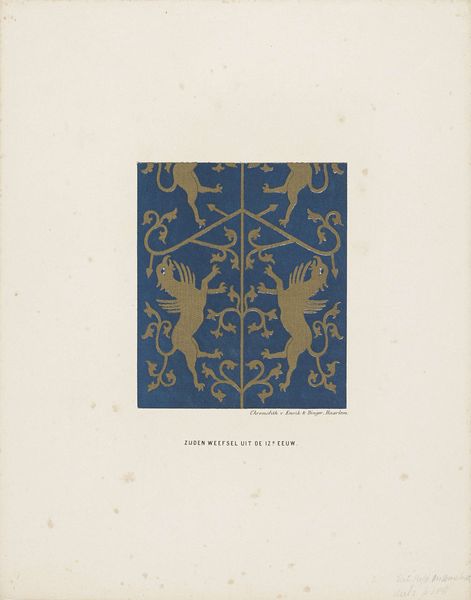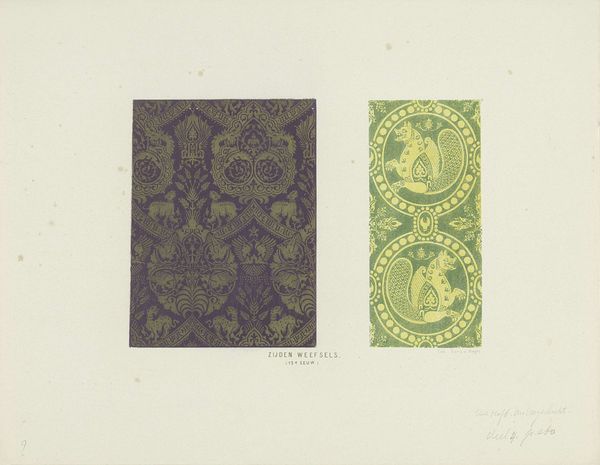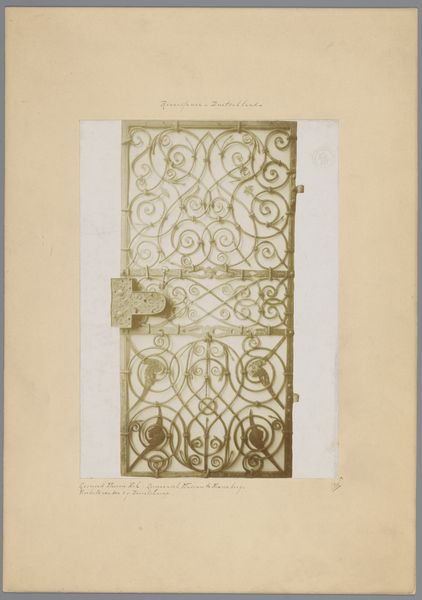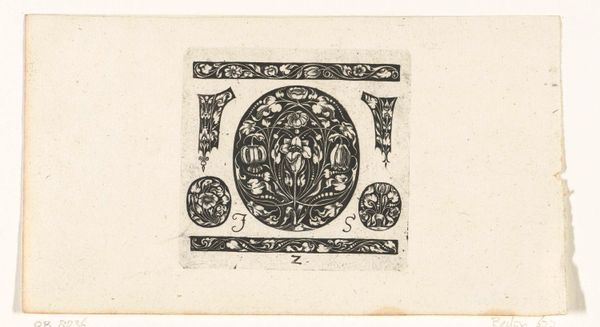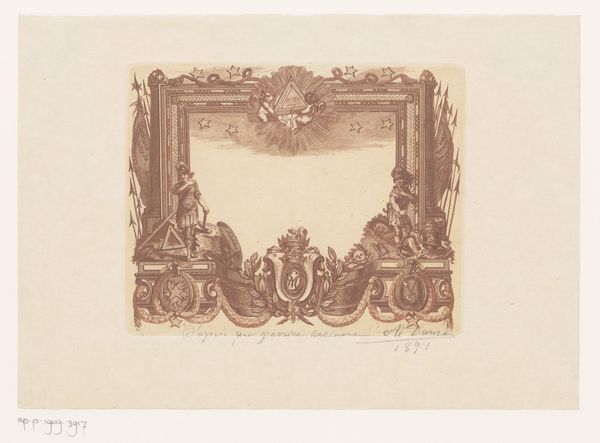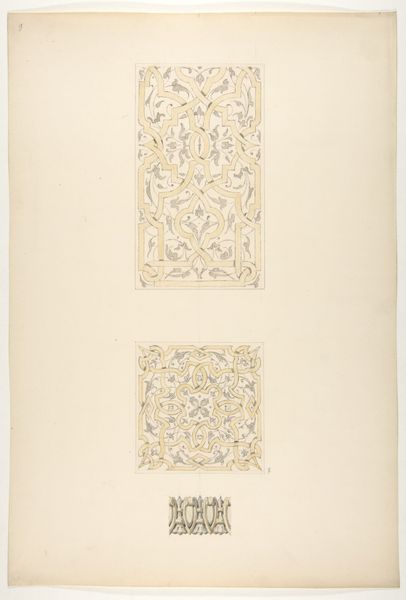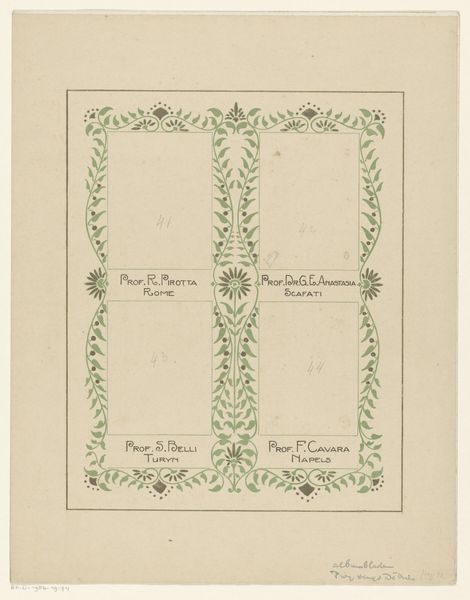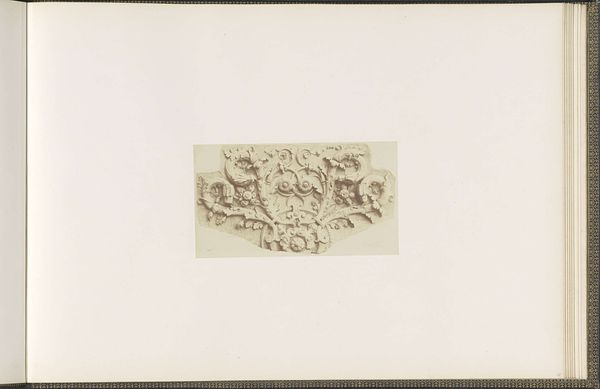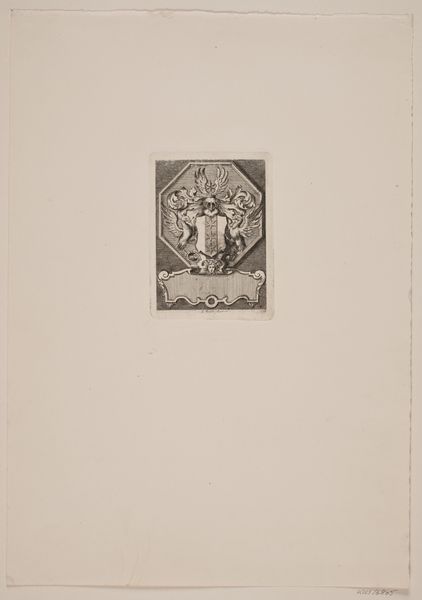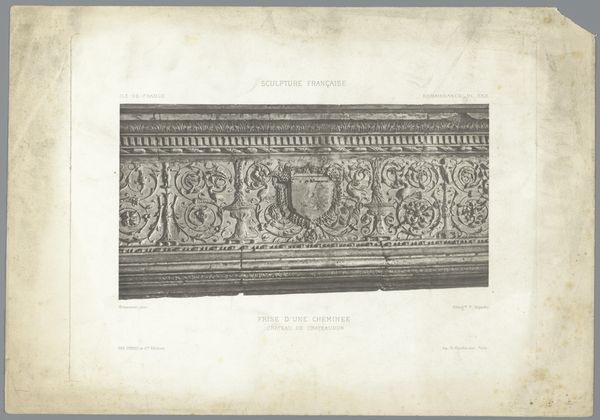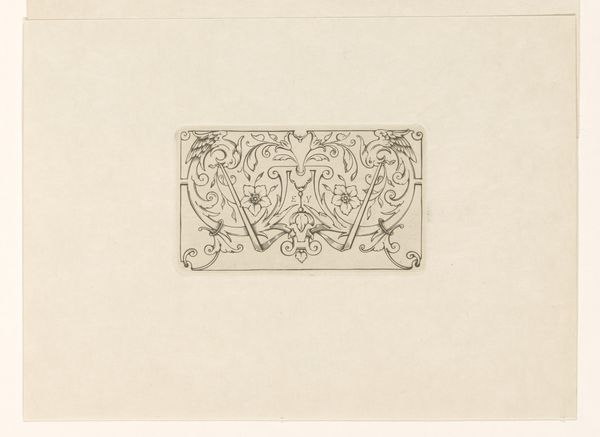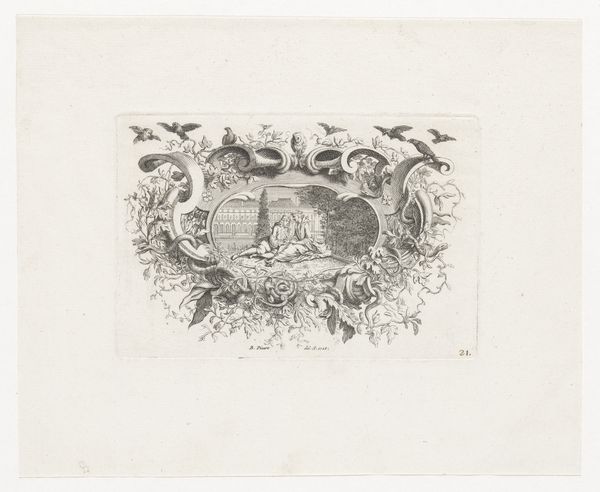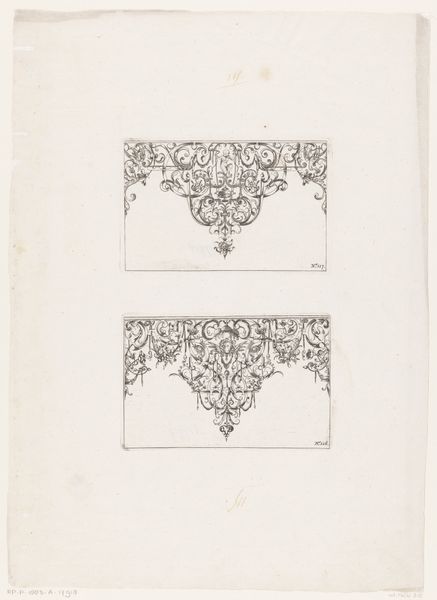
print, engraving
#
byzantine-art
# print
#
figuration
#
history-painting
#
engraving
Dimensions: height 292 mm, width 375 mm
Copyright: Rijks Museum: Open Domain
Curator: Welcome to the Rijksmuseum. We're standing before an engraving attributed to "Anonymous," dating back to between 1857 and 1864. It’s titled “Borduurwerk, 9e eeuw,” which translates to “Embroidery, 9th century.” Editor: My first impression is one of stylized solemnity. The figures seem locked within their architectural frames, the colours restrained but regal. There is almost a flattened, illustrative quality to it. Curator: That's perceptive. Considering this piece is an engraving depicting embroidery, I wonder what sort of labor went into creating the original textile and later reproducing it. We must account for both the tangible efforts behind the embroidered work of the 9th century and the printer's labor in mid 19th century. What were their respective socioeconomic contexts? Editor: A fascinating contrast. Thinking about it through a lens of iconography, it is hard to miss the repeated visual elements. For instance, consider the consistent use of the halo across each figure. How might these circles affect their cultural significance? Curator: The halos mark the subjects, undoubtedly. But also, notice how this piece serves as a record and replication of Byzantine styles during a revivalist period. To me, the method of reproduction mirrors and elevates craft by presenting its visual forms in the more readily circulated form of printed media. The printing materials—ink, paper—became vehicles for broader access to historical artistic skills and their traditions. Editor: Precisely. And while it mimics an older medium, the printing makes those cultural touchstones more pervasive. Think about the keys held by Petrus or the blessing gesture. What narratives do those invoke for the viewer? Each element functions as a potent symbol, continuing meanings across time. Curator: Absolutely, these elements work like tiny historical archives unto themselves. But to fully unravel this piece we would need to delve deeper into archival evidence surrounding artisanal economies during this period and examine which methods allowed artisans access to resources to replicate or recreate early Medieval visual vernacular in novel printed iterations. Editor: Agreed. Considering our focus today, viewing this print allows us to appreciate the endurance of shared artistic memory as it transforms to match our material surroundings. Curator: Yes, this artwork invites us to view an image carrying traces of its material history even across different eras.
Comments
No comments
Be the first to comment and join the conversation on the ultimate creative platform.
